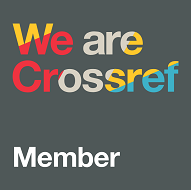Basic Dimensions of Early Reading Skills of Elementary School Students in Bandung
Abstract
Keywords
Full Text:
PDFReferences
Abidin, Y. (2013). Pengembangan Model Penilaian Otentik dalam Pembelajaran Membaca Pemahaman di Sekolah Dasar. Bandung: Universitas Pendidikan Indonesia.
Blomert, L. 2011. The Neural Signature of Orthographic–Phonological Binding in Successful and Failing Reading Development. Neurolmage, 695-703.
Bond, G.L., Tinker M.A., Wasson, B.B., & Wasson, J.B. (1993). Reading Difficulties: Their Diagnosis and Correction. Needham Heights: Allyn and Bacon.
Burns, R., & Roe (1984). Teaching reading in today’s elementary schools. Boston: Houghton Mifflin.
Callinan, C. & Zee E.V.D. (2010). A Comparative Study of Two Methods of Synthetic Phonics Instruction for Learning How to Read: Jolly Phonics and THRASS. The Psychology of Education Review, 34(1). Spring.
Çayir, A. (2017). Analyzing the Reading Skills and Visual Perception Levels of First Grade Students. Universal Journal of Educational Research, 5(7), 1113-1116.
Clemens, N.H., Kelsey, R., & Oscar W.B.( 2016) Reading Difficulties in Young Children: Beyond Basic Early Literacy Skills. Policy Insights from the Behavioral and Brain Sciences, 3(2), 177–184. doi: 10.1177/2372732216656640
Cole, R.A., et al. (1996) Contribution of consonants versus vowels to word recognition in fluent speech. The Journal of the Acoustical Society of America 2:853-856 vol. 2
Damaianti, V.S. (2018). Alat Ukur Kemampuan Membaca Verbal dan Nonverbal bagi Anak Berkebutuhan Khusus. Bandung: UPI Press.
Depdiknas. (2003). Undang-Undang Sistem Pendidikan Nasional No 20 Tahun 2003 Tentang Sistem Pedidikan Nasional. Jakarta: Depdiknas .
Decker, S. L., Englund, J. A., Carboni, J. A., & Brooks, J. H. (2011). Cognitive and developmental influences in visual-motor integration skills in young children. Psychological Assessment, 23(4): 1010-1016.
Erhardt, R. P., & Duckman, R. H. (2005). Visual-perceptual-motor dysfunction and its effects on eye-hand coordination and skill development. Dalam M. Gentile, editor, Functional visual behaviour in children: An occupational therapy guide to evaluation and treatment options. Bethesda, Maryland: AOTA Press, 171-228.
Franceschini, S., et al. (2012). A Causal Link between Visual Spatial Attention and Reading Acquisition. Developmental and Cognitive Neuroscience Laboratorium Department of General Psychology, University of Padua. Italia
Gunarsa, S. (2010). Psikologi Anak Bermasalah. Jakarta: Bina Aksara.
Hanneford, C. (2005). Smart moves: Why learning is not all in your head. 2nd ed. Salt Lake City, UT: Great River Books
Harpine, E.C. (2016). Teaching At-Risk Student to Read: The Camp Sharigan Method. Swiss: Springer International Publishing AG.
Herwell. (2008). Learning Disabilities Handbook. San Fransisco: Jossey Bass.
Hoffman, J.M., & Diae L.S. (2004). The Texts in Elementary Classroom. London: Lawrence Erlbaum Associates.
Hofslundsengen, H., Hagtvet, B. E., & Gustafsson, J. E. (2016). Immediate and delayed effects of invented writing intervention in preschool. Reading and Writing, 29, 1473–1495.
Lee, H., et al. (2002). The processing of consonants and vowels in reading: Evidence from the fast priming paradigm. Psychonomic Bulletin & Review 2002, 9 (4), 766-772
Mandich, M. B., & Cronin, A. (2005). Human performance, function and disablement. Dalam A. Cronin & A. Mandich, editors, Human develop- ment and performance throughout the lifespan. Clifton Park, NY: Homson-Delmar Learning.
Massengill, D., & Sundberg, M. L. (2006). A unique, neurologically integrated approach designed to simultaneously teach letter sounds and forma- tions. Reading Improvement, 43(3): 111-128.
Moore, E.R., & Sudduth, L.E. (2014). Reading Instruction For Nonverbal Students With Autism Or Selective Autism. California State University: Project,.
National Early Literacy Panel. (2008). Developing early literacy. Washington, D. C.: National Institute for Literacy.
Oakhill, J.V., & Cain, K. (2012). The Precursorsof Reading Ability in Young Readers: Evidence from a Four-Year Longitudinal Study. Scientific Studies of Reading, 16(2), 91-121. htpps://doi.org/10.1080/10888438.2010.529219
Pajak,B., Creel, S.C., & Levy, R. (2006) Difficulty in Learning Similar-Sounding Words: A Developmental Stage or a General Property of Learning? Journal of Experimental Psychology Learning Memory and Cognition 42(9)
Piasta, S. B., Groom, L. J., Khan, K. S., Skibbe, L. E., & Bowles, R. P. (2018). Young children’s narrative skill: concurrent and predictive associations with emergent literacy and early word reading skills. Reading and Writing, 31(7), 1479-1498.
Rohde, L. (2015). The Comprehensive Emergent Literacy Model: Early Literacy in Context. Sage open. 5, Issue 1, January-March 2015 https://doi.org /10.1177 /2158244015577664
Sanoe, B.C., et al. (2019). Efektivitas Pelatihan Bunyi Huruf dalam Meningkatkan Kemampuan Membaca Awal Siswa Sekolah Dasar. Jurnal Muara Ilmu Sosial, Humaniora, dan Seni, 3(2),440-448. http://dx.doi.org/10.24912/jmishumsen.v3i2.6022
Sénéchal M., LeFevre J., Smith-Chant B. L., Colton K. V. (2001). On refining theoretical models of emergent literacy: The role of empirical evidence. Journal of School Psychology, 39, 439-460.
Sénéchal, M., Ouellette, G., Pagan, S., & Lever, R. (2012). The role of invented spelling on learning to read in low-phoneme awareness kindergartners: A randomized-control-trial study. Reading and Writing, 25(4), 917–934. doi:10.1007/s11145-011-9310-2.
Shanahan, T., & Shanahan, C. (2008). Teaching disciplinary literacy to adolescents: Rethinking content-area literacy. Harvard educational review, 78(1), 40-59.
Shaymitz, S. (2003). Overcoming Dyslexia a New and Complete Science-Based Program for Reading Problemsat Any Level. Vintage ISBN. United State of America.
Sugiyono. (2015). Metode Penelitian Pendidikan Pendekatan Kuantitatif, Kualitatif, dan R&D. Bandung: Alfabeta.
Toste, J.R., Williams, K.J., & Capin, P., (2017). Reading Big Words: Instructional Practices to Promote Multisyllabic Word Reading Fluency. Intervention in School and Clinic Vol.52(5)270–278 https://doi.org/10.1177/1053451216676797
USAID. (2014). Pembelajaran Literasi Awal Sd/MI di LPTK: Buku Sumber untuk Dosen LPTK. RTI Internasional.
DOI: http://dx.doi.org/10.17977/um048v26i1p39-46
Refbacks
- There are currently no refbacks.
Copyright (c) 2020 Jurnal Ilmu Pendidikan

This work is licensed under a Creative Commons Attribution 4.0 International License.
| Jurnal Ilmu Pendidikan |
![]() Jurnal Ilmu Pendidikan is licensed under a Creative Commons Attribution 4.0 International License.
Jurnal Ilmu Pendidikan is licensed under a Creative Commons Attribution 4.0 International License.


2.png)
1.png)
1.png)
1.png)
1.png)
4.png)
.png)
1.png)
.png)
.png)


3.png)
1.png)
1.png)


